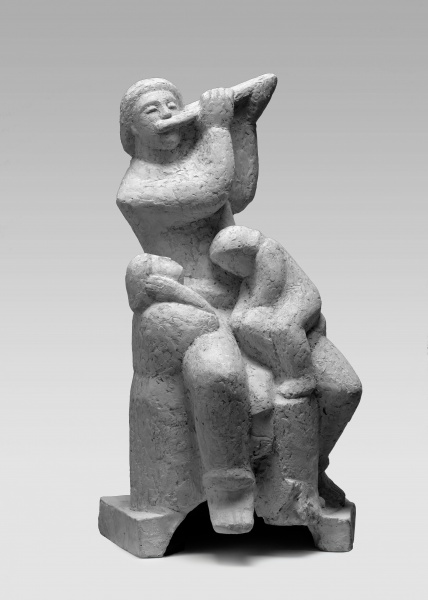Juozas Mikėnas’ (1901–1964) work is distinguished by its Neoclassical style, marked by constructiveness, clarity, and a pursuit of harmony and moderation. Exuding tranquillity and monumentality, his sculptures echo the sculptural traditions of past centuries, embodying inner peace, and harmony with the surrounding environment. This stylistic inclination took root during his studies in Paris, where Neoclassical forms held sway at the time. Additionally, his encounter with an exhibition of Picasso’s work in 1932 left a lasting impression, infusing his figures with certain aspects of Picasso’s Neoclassical period and motifs. Beyond the quest for harmonious forms, Mikėnas’ work, which is aligned with Neoclassicism, often conveys motifs suggestive of peace and serenity: depictions of mothers and children, women at rest, or a kanklės player-teacher. Musicians exemplifies this, featuring a composition of three figures: a man playing a pipe, and two children huddling up against him. The sculptural forms are rounded and generalised, imbuing the composition with a serene ambiance and a harmonious interplay of lines and volumes.
Text author Jurgita Ludavičienė
Source: Law firm Valiunas Ellex art album
THE ART OF MATERIALS. Compiler and text author Jurgita Ludavičienė








